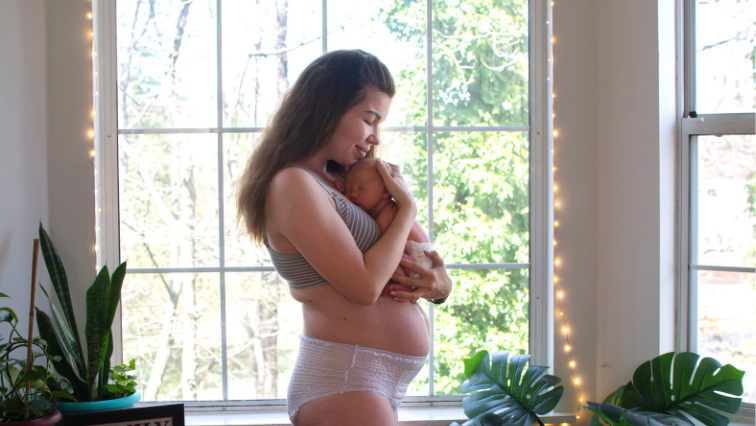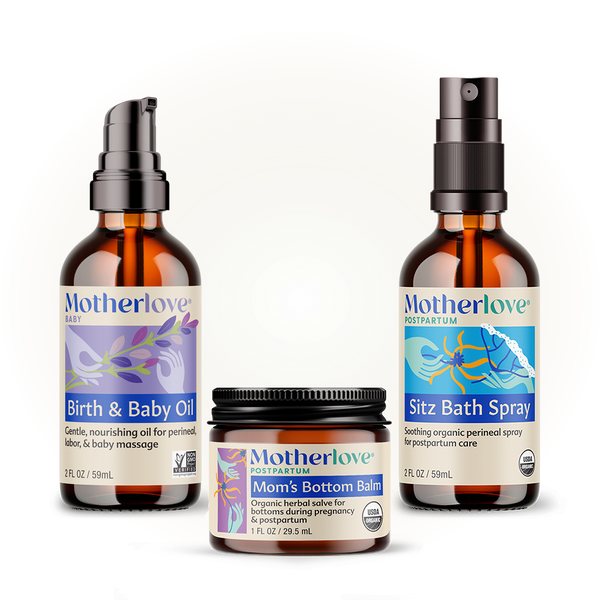Written by: Mary, Postpartum Doula.
During pregnancy, your body performs the enormous task of growing a human. An often-overlooked part of this process is the growth of a whole new essential organ: the placenta.
WHAT IS THE PLACENTA?
The placenta is a 1-pound, pancake-shaped organ that develops during pregnancy, attached to the inside of the uterine wall. Connected to the fetus by the umbilical cord, the placenta provides your growing baby with oxygen, nutrients, and antibodies and filters out germs, harmful substances, and your baby’s waste. The placenta is also a hormone powerhouse, producing much of the progesterone, estrogen, relaxin, and oxytocin that you and your baby need during pregnancy.
After your baby is born and the umbilical cord is cut, the role of your placenta has come to an end. You will birth your placenta in the third stage of labor, and your uterus will contract and begin to heal the wound left behind.
But what becomes of the placenta? What should you do with this organ that took so much energy to grow and that formed a literal bridge between you and your baby for nine months?
WHAT TO DO WITH YOUR PLACENTA
First of all, if you'd like to see your placenta after birth or if you’d like to transport it home for future use, make those desires known to your provider during your prenatal visits and include a written note in your birth plan. Otherwise, most hospitals and birth centers dispose of the placenta as medical waste.
Also note: If you plan to ingest your placenta, be sure to handle it safely, as you would handle raw meat. The placenta should be placed on ice and in a cooler within 30 minutes of its birth and transferred to a fridge within 12 hours of birth. For a hospital birth, you will likely need to sign for the release of your placenta, and you will be responsible for providing a cooler and transporting it home.
Many non-western cultures have a rich history of traditions involving the placenta. Here are some that are gaining traction again in recent decades:
1. Placenta Prints
Art prints are a lovely way to honor the placenta. The blood vessels of the placenta, together with the rounded shape of the organ and the long umbilical cord, form a beautiful “Tree of Life” image, symbolizing the life-giving role of the organ. Prints can be made with the blood of the placenta or with paints. Keep in mind, if you plan to ingest your placenta, you will want to choose natural paints that are safe to ingest, as some paint may remain on the placenta.
2. Placenta Consumption
While most mammals consume their placenta after birth, humans most commonly do not. The safety of placentophagy is debated by some, but anecdotal evidence points to numerous benefits of a birthing mother consuming the nutrient-rich placenta in the postpartum period, such as the decreased risk of postpartum depression, better energy, increased milk supply, and decreased bleeding.
Placenta encapsulation is perhaps the most palatable way to consume your placenta and has grown in popularity in recent years. During the encapsulation process, a specialist steams, dehydrates, and grinds up your placenta, then returns it to you in about 200 gel caps that you take as a dietary supplement during your postpartum period.
Some mothers take a more direct approach, consuming their placenta raw in smoothies or roasted with vegetables.
3. Placenta Burial
For centuries, many cultures across the world have honored the placenta with a burial ritual. You might bury the placenta shortly after birth, or you might store it in your freezer until a convenient time for burial. You might bury it in a special place, symbolizing the connection between your baby and the land. You might read a poem or say a prayer. Or, you might bury it under a special tree or plant, so the placenta can continue to fertilize new life.
Whether you make art prints with your placenta, encapsulate it, cook it, consume it raw, give it a ceremonial burial, or leave it at the hospital, there is no one right choice of what to do with your placenta. As with so many choices in motherhood, you can trust yourself to choose the path that aligns with your preferences and supports the well-being of you and your baby.
Citations:
Pregnancy, Birth, and Baby. What is the Placenta?
https://www.pregnancybirthbaby.org.au/what-is-the-placenta
De Bellefonds, Colleen. What to Expect. What is the Placenta
https://www.whattoexpect.com/pregnancy/placenta#definition
IPEN. Placenta Care.
https://www.placentanetwork.com/placenta-care/
The Birthsong Botanicals. Placenta Rituals.
https://www.birthsongbotanicals.com/blogs/birth-song-blog/placenta-rituals
Whiteman, Honor. (2017). Medical News Today. Placenta: a ‘superfood’ or a dietary fad?
https://www.medicalnewstoday.com/articles/319806#Placenta-in-a-pill-or-placenta-patties?





